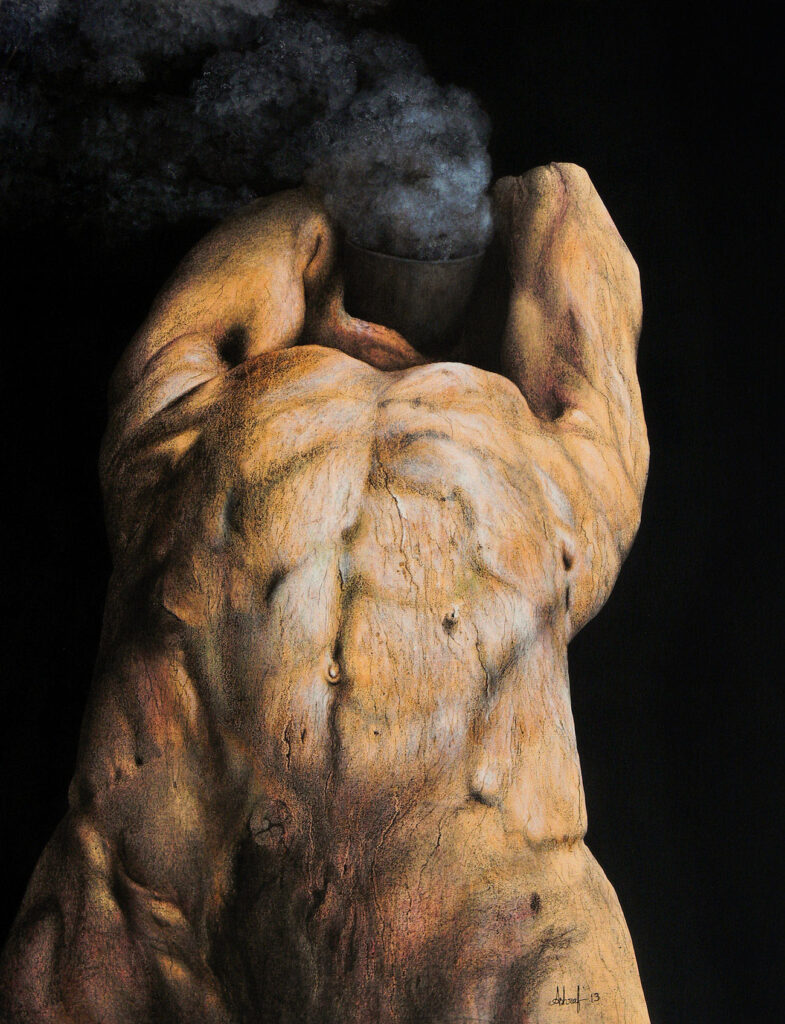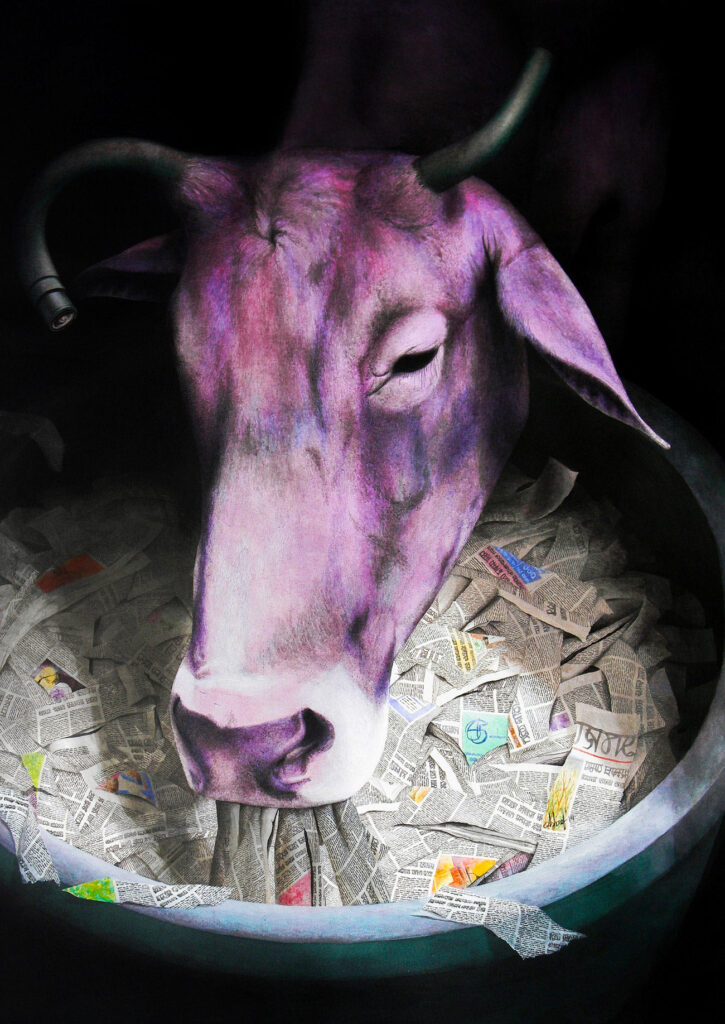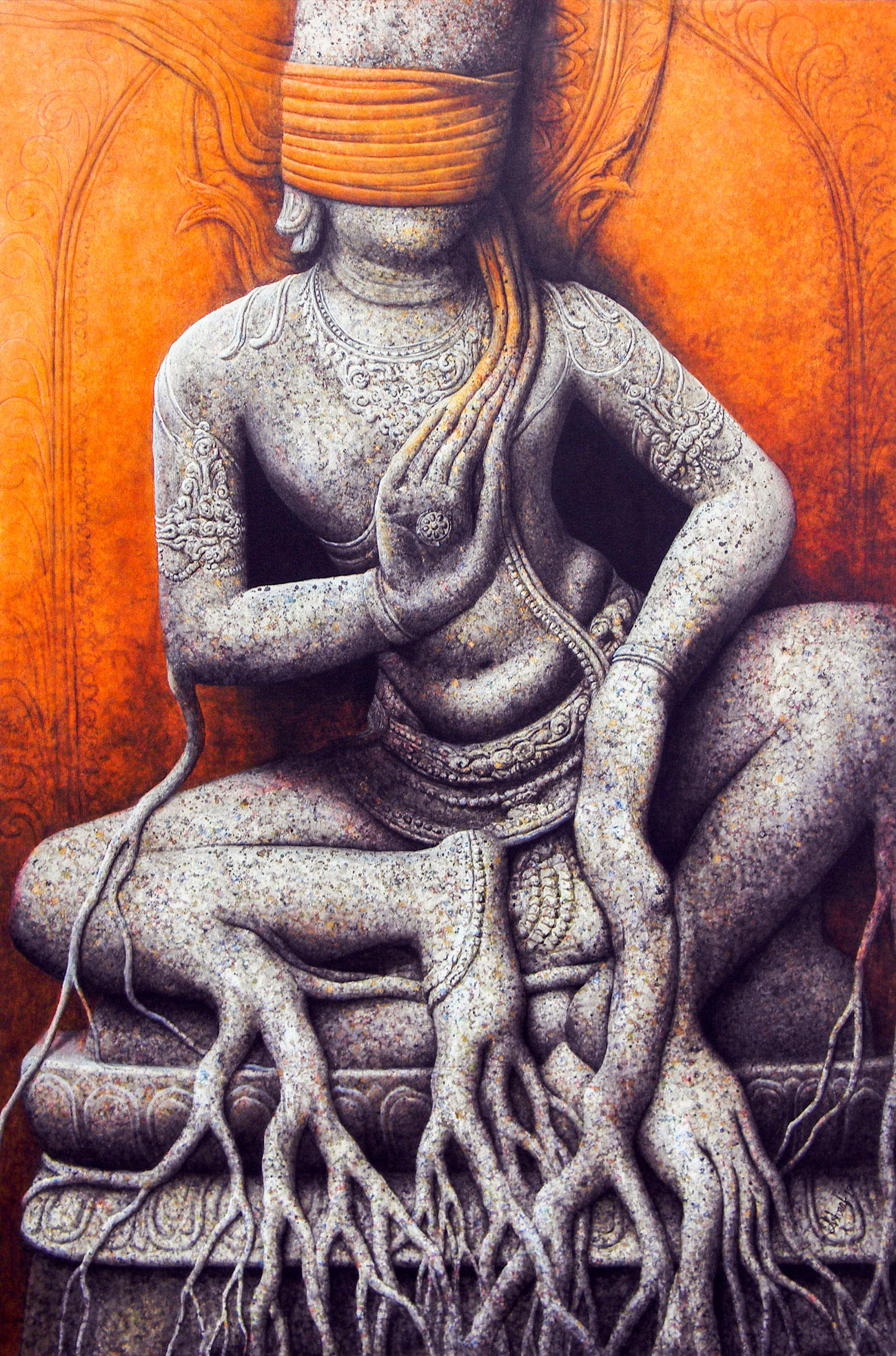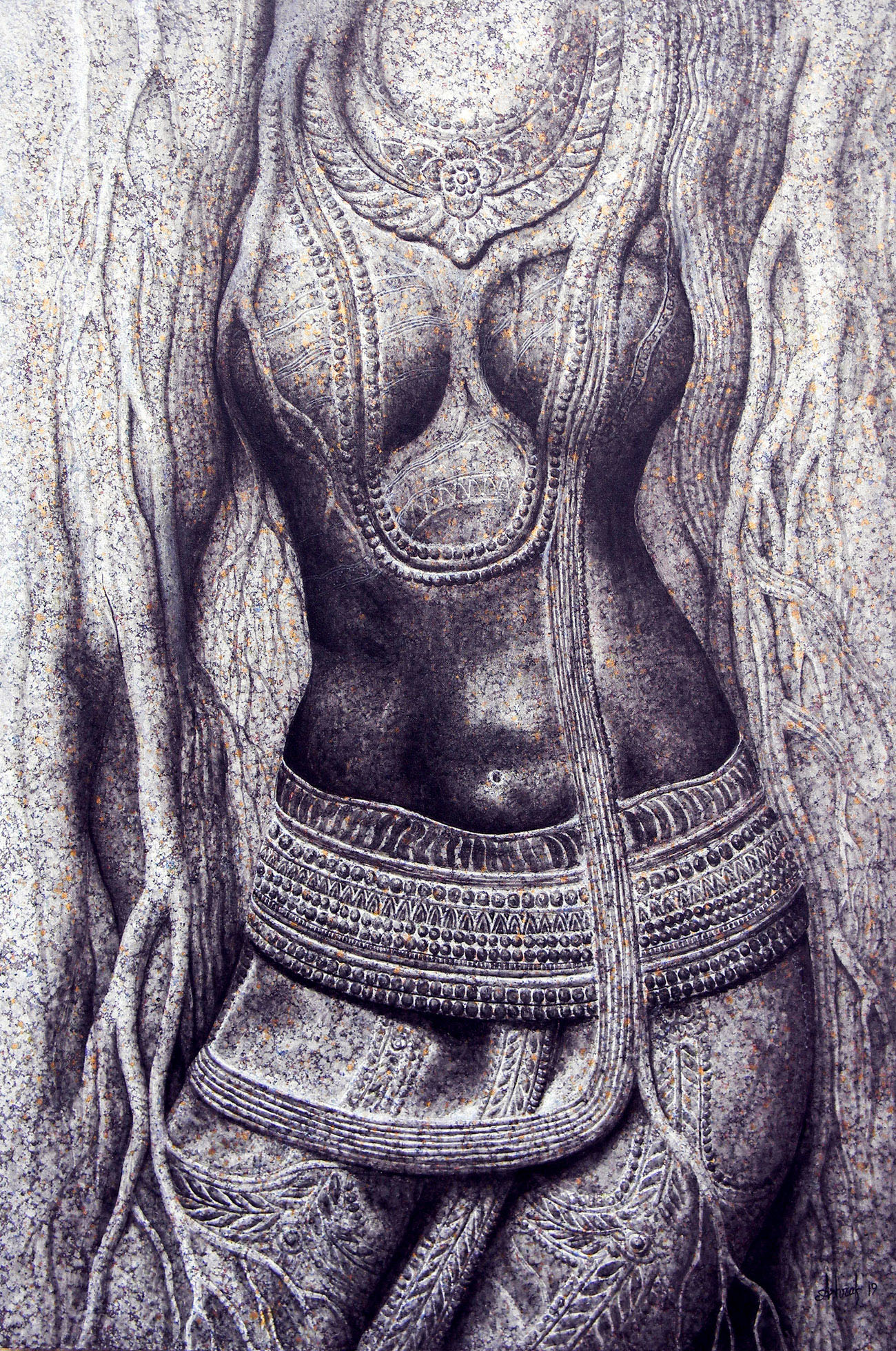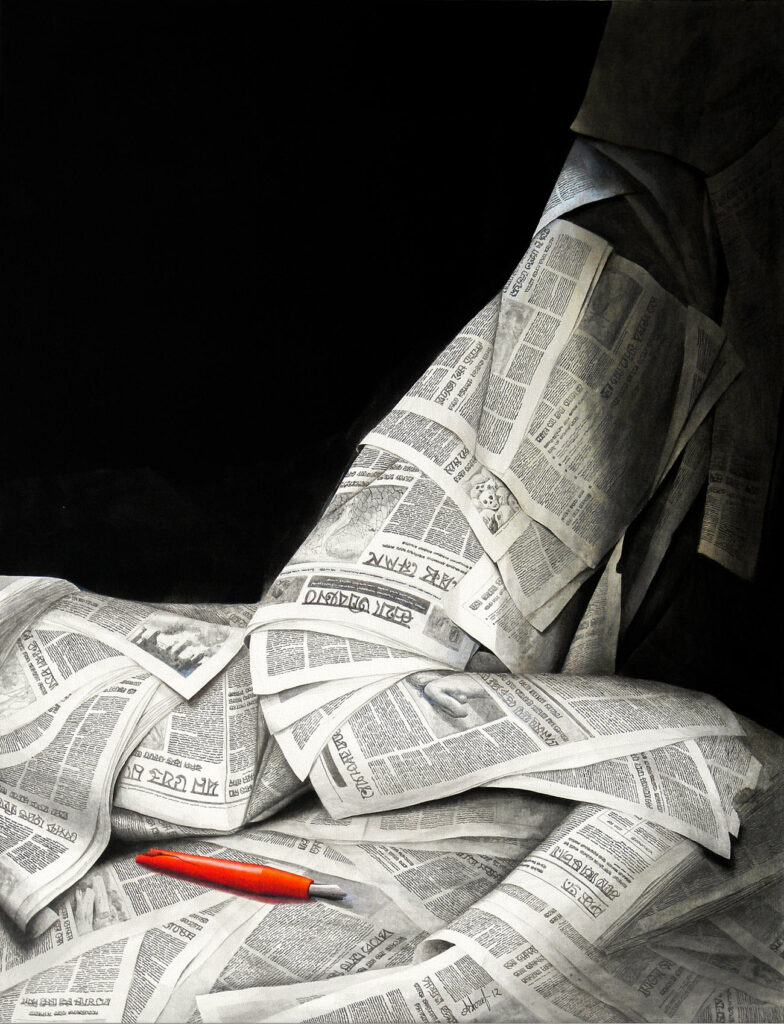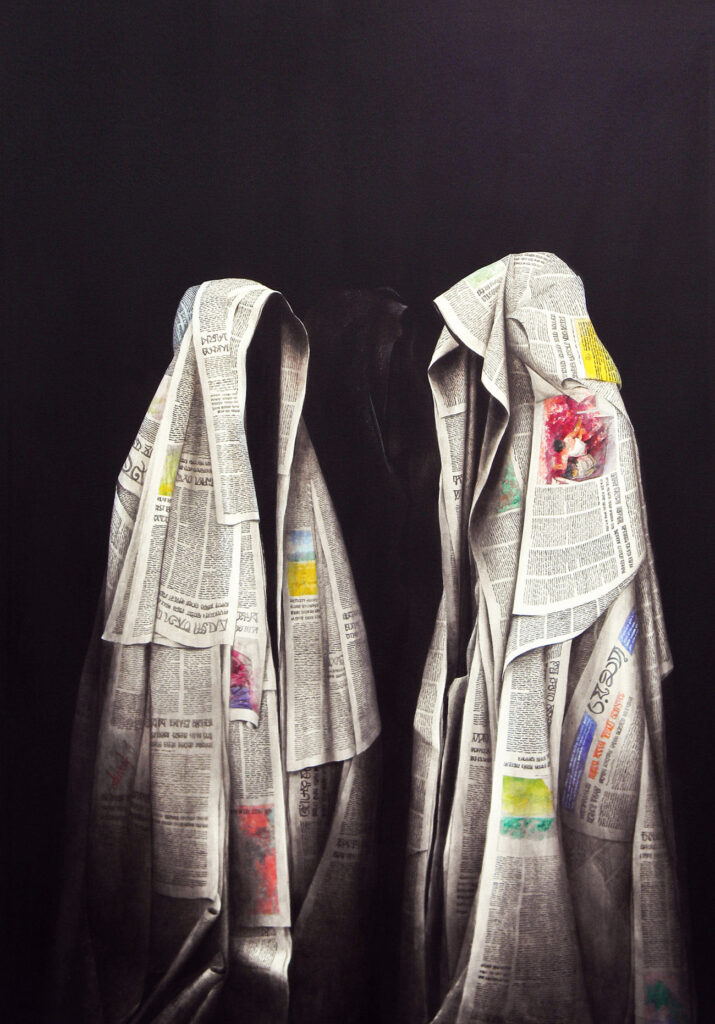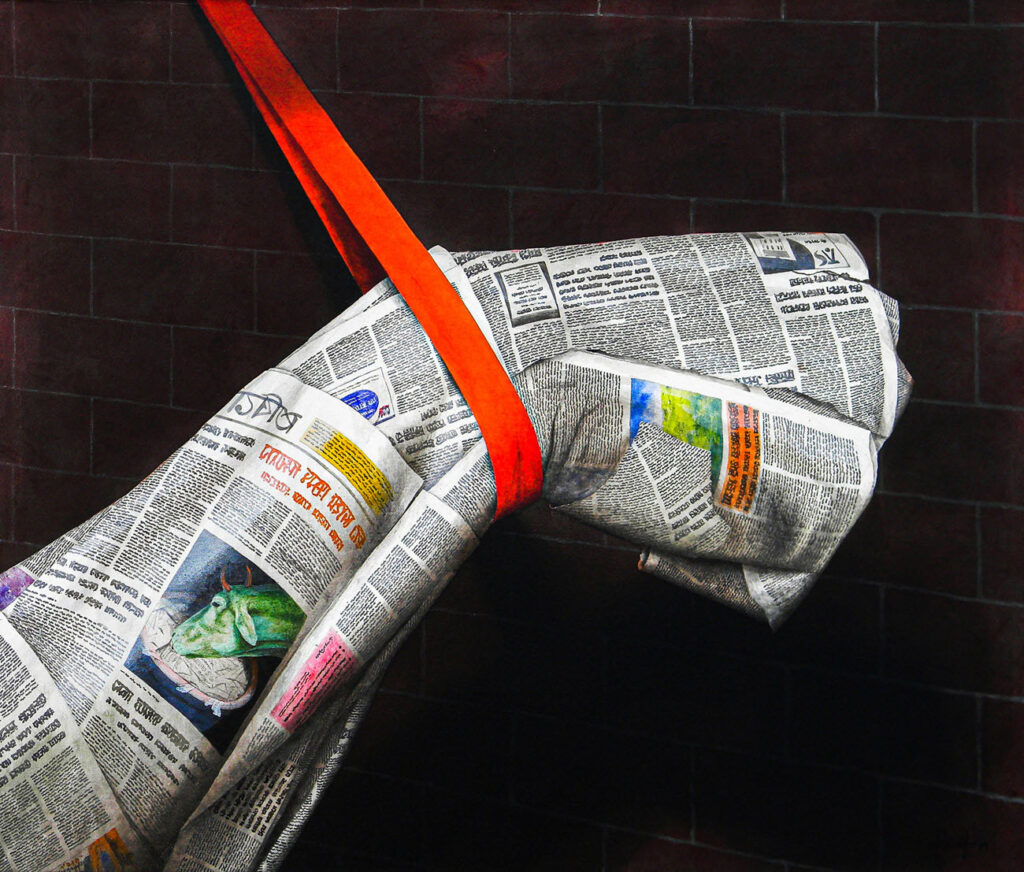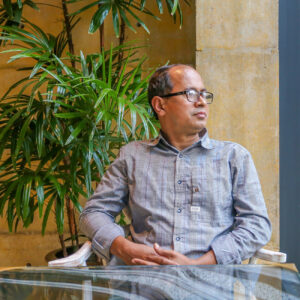Anthropomorphic Expression
One of the most revolutionary artists of our time, Ashraful Hasan has transcended systemized impediments through his art, and through his mindset that initiated such art. His art is born from profound philosophies, notions that move him greatly for years till it is ready to be presented. To him, art is too pure to be tainted by materialistic motives or egoistic division.
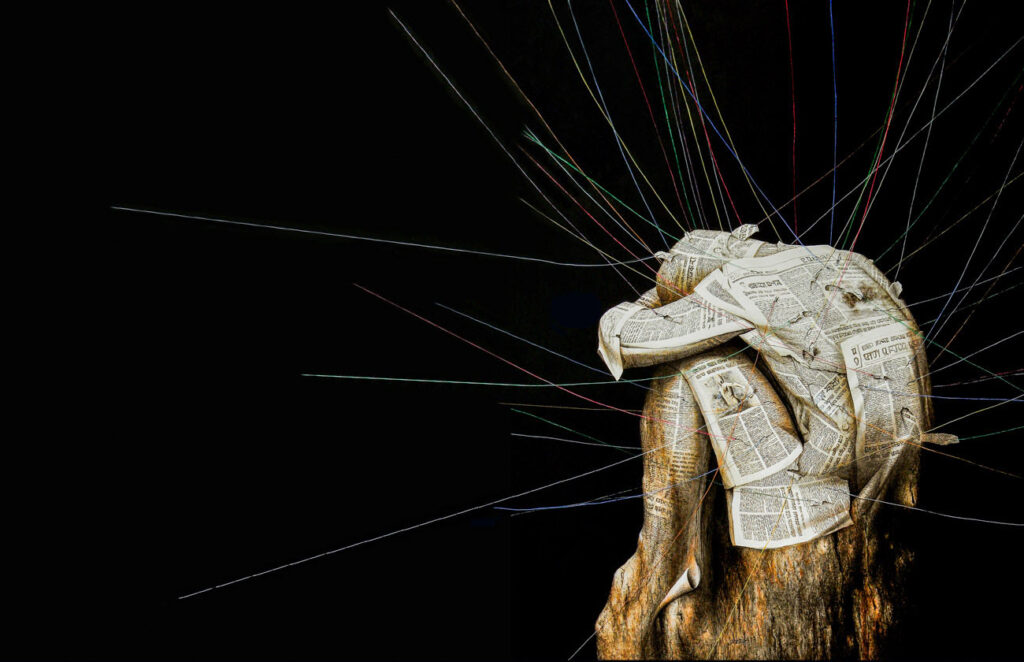
Art is the sheer representation of all that one has carried with them all along like a wanderer.
He has completed his Bachelor of Fine Arts from Government Art College, Chittagong; and his Master of Fine Arts from University of Chittagong. Coming from a small village of Feni, art wasn’t a concept notable enough to be practised, let alone pursued. Where a notion as such never existed, Ashraful stayed behind the fencing of limited thoughts. The maximum he did, like all others, was draw motifs, water lilies and trees, which he innocently hung on the wall of his room. Seeing potential in his drawings, his uncle recommended his father to get him admitted into Art College.
After getting into Art College, he experienced an epiphany. Up till then, he never knew ‘art’, neither aimed for it. Life in Art College completely consumed and engaged him in the art world. There was a particular day, when he lay under the open bright sky, staring at the passing woolly clouds, “I wondered where it went and got lost.” He then realized, “All that surrounds us, we never notice them because it does not affect us significantly; where it comes from and where it heads to, we never know.”
Some artists who he truly admires are René Magritte, Salvador Dalí, and from the home country, S.M. Sultan. Precisely, Ashraful is fascinated by the play of light and dark. It intrigues him. It is a tool he uses in his own art time and again, a concept he couldn’t let go. It simply keeps finding its way back in his paintings.
A series of his substantial works has profound philosophy behind it. He used to visit a hilltop of Chittagong very often. There he found the root of a tree decaying gradually. It occurred to him that since plants have life, it must be in pain, as it is slowly giving in its life. He contemplated further, how interdependent human relation is with plants, “We breathe, and they take it in. They breathe out, which we take in.” Since the relation lies in the core, which is breathing, therefore it is of the utmost importance.
Ashraful Hasan further points out the damage from urbanization and industrialization. Some of these damages happen directly to people and some through a natural process. Also, he focuses on the current growing issue of the world, which is wildfire. The mortality of plants and trees is a growing concern, he feels. Hence, he presented the vitality of this interdependence in his spectacular artwork of tree and human figure merged together to form one body.

Moving forward, a social concern, from a humane perspective, moved Ashraful to portray it through his artwork. He explained,
“Notice how we reach for newspaper first thing in the morning, with utmost urgency? Ironically, it’s the same thing which as easily makes to the bin, at the end of the day.”
He metaphorized humans as newspapers. As commonly practised in our society, a person is prioritized the highest as long as they are of our service. As soon as the same people retire, we dispose of them just as easily as a newspaper. The similarity he drew between humans and newspaper is impeccable. He presented the concept in his art by shaping newspaper into human form.
In addition, newspapers supposedly represent people’s voice. However, several attempts are made to choke that voice and so the very purpose of a newspaper is defied. He illustrated this concept by choking the human-like form newspaper with a red ribbon. The red ribbon represents the leash on people’s say. Again, he depicts a surreal image where a cow is having to eat a newspaper instead of hay. The phenomenon is as unnatural as human beings having to do something which they are not supposed to do, either circumstantially or by being forced to.
Another incident that deeply affected him was the Rohingya genocide by the Myanmar government in the name of Buddhism. Buddhism is a religion of peace and kindness. Therefore, doing the very opposite of what the religion teaches, in its name, is like putting a blindfold on Buddha to carry on their transgression. Hence, he illustrates this concept by painting Buddha in a blindfold.
For Ashraful, art is a continuous process. An incident that may have moved or scarred him years back surfaces much later in his art. His sentiments build up for years or are instantly presented to the world, depending on when he is ready to present that vision. Therefore, artist block isn’t a concern for him. He necessarily doesn’t feel the need to draw inspiration, it occurs to him effortlessly, for instance, while walking in the streets.
Ashraful Hasan has a strong stance on preserving individuality. Because beauty lies in individuality. He opinionates that, let’s say, if one is influenced by the artworks of Europe, feeling it as superior and better, then there’s lack of originality there. He says, “Art is not divided as countries are by political agenda. Art is simply influenced by the background, society, culture, era, and surroundings you belong to. Whatever you have felt by the contribution of these aspects, are expressed through your art. Hence, following a trend in Europe won’t match all characteristics that have influenced your work.”
As for new artists looking for inspiration, Ashraful advises to not look for it, rather let it come naturally, to observe what one feels. He suggests to simplify and exaggerate parts of a subject and think about the subject persistently, then they can certainly someday implement it in their work. He also acknowledges the fact that academic institutions deliver systemized layouts, which leave little room for art driven by philosophies. Hence, by default from the beginning, one doesn’t get to exercise their forte.
Besides traditional canvas painting with acrylic colour, Ashraful has also expanded his horizon by doing mural art for the restaurant Izumi and interior art for restaurant Oro. He discovered his potential by going out of his way. He expressed, “Had I not done it, I would have never known about such aesthetic beyond canvas art.” Now people are getting to observe his art, even more, this way than his regular artwork.
Ashraful Hasan is a visionary artist who initiates his art with utmost genuineness. His work sends profound messages, serving food for thought for those looking beyond the lines. In this day and age, we are conditioned to be engrossed by the materialistic world and have less time to look around, to feel; Ashraful’s artwork sends a soft reminder to contemplate on our surroundings.

